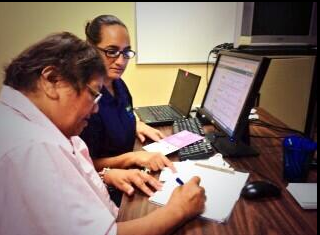New director takes over Hawaii’s troubled Obamacare exchange

SIGN HERE: Hawaii Health Connector sign ups improved Hawaii’s uninsured rate by 2.75 percent at a cost of $204 million, study shows.
By Malia Zimmerman | Watchdog.org
HONOLULU – Hawaii’s troubled Obamacare exchange has a new executive director, and he’ll have a mess to sort out to earn his $150,000 annual salary.
Jeffrey Kissel, president and chief executive officer of HawaiiGAS, replaces Hawaii Health Connector Interim Executive Director Tom Matsuda. He will be the third leader of the state insurance exchange in less than a year.
The Connector’s board said in a statement Kissel has “a proven track record of leading successful organizations.”
But Kissel has no experience in the medical or insurance fields. He was president and CEO of HawaiiGAS, served in senior roles at URS, an engineering and construction company, and worked in other business organizations.
However, Hawaii Health Connector board chairman Clifford Alakai said he believes Kissel is the “ideal person to lead the Connector forward for the long-term.”
“His prior experience leading prominent and successful companies, as well as his drive and enthusiasm, will serve the Connector well to secure affordable health coverage for the residents of Hawaii,” said Alakai.
Kissel said he believes everyone deserves to have health insurance coverage, and the Hawaii Health Connector is “a highly viable resource for reasonably priced, high-quality health care.”
However, he inherits a number of financial, political and managerial challenges.
The state received $204 million from the federal government to establish the Connector and build a web portal, but that funding largely expires at the end of 2014.
During its past session, the Hawaii Legislature only allocated $1.5 million in funding for the insurance exchange, a fraction of what was requested.
The Connector’s website, which CGI Corp. developed and maintains for $74 million, still is not functioning properly nearly a year after it launched.
Hawaii Medical Service Association, the state’s largest health insurer, recently announced it won’t participate in the Connector’s Small Business Health Options Program as of January. The Connector, already under fire for being the most costly exchange in the nation, is left with just one insurance company for local small business owners to select — Kaiser Permanente.
The decision by HMSA came after it spent 8,000 hours dealing with the exchange’s technical problems, which drained finances and staffing resources, and information on 133 patient accounts vanished as they were transferred from the connector to HMSA.
HMSA will continue to insure another 5,000 people enrolled through the individual subscriber portion of the Connector.
Kissel will have to find new ways to keep the exchange financially viable with considerably less government funding.
The Connector is supposed to be funded through enrollment fees charged to local insurers, but the number of enrollees fell far short of the original business plan.
Gov. Neil Abercrombie hoped hundreds of thousands of people would register with the exchange. State officials initially estimated as many as 300,000 people would sign up for health insurance. But the last public estimate included 10,800 people who enrolled, costing about $18,888 per enrollee for taxpayers.
The exchange has hardly reduced Hawaii’s uninsured population. The state’s uninsured rate is about 6 percent, dropping just 2 percent since the exchange launched last year.
There is also a quiet political war under way that Kissel will now be in the middle of.
The Hawaii Health Connector board of directors wants the nonprofit to remain independent and financially separate from the state, as the exchange is set up to be.
However, state administration wants the state Department of Human Services — and some key lawmakers — to take over the Connector.
A pricey bureaucracy in place includes well-paid executives at the top of the Connector. Some half dozen people reportedly earn more than Kissel will.
As the exchange reaches its one-year anniversary, open enrollment for the exchange starts Nov. 15, and Kissel said he is “looking forward to hitting the ground running.”







